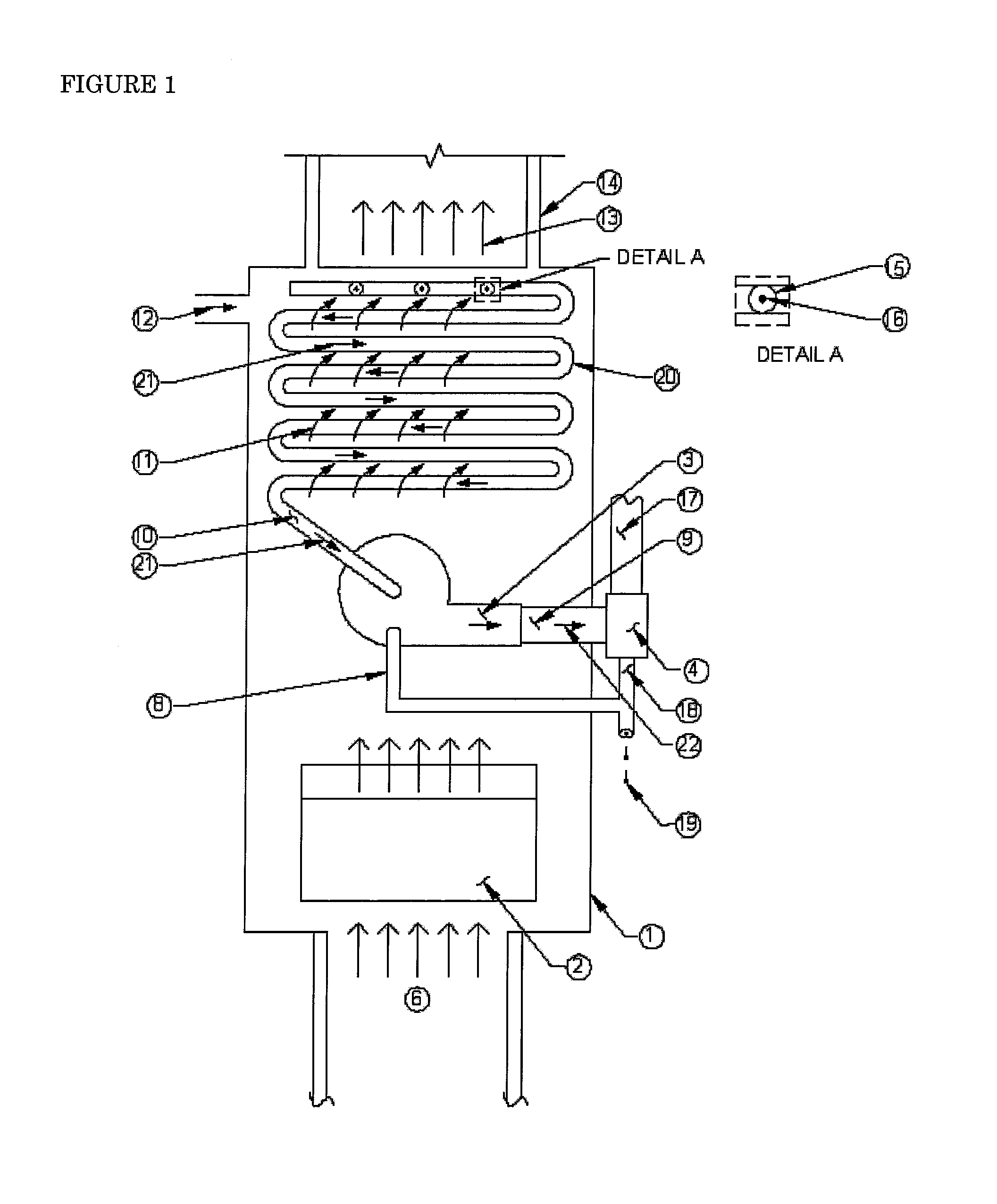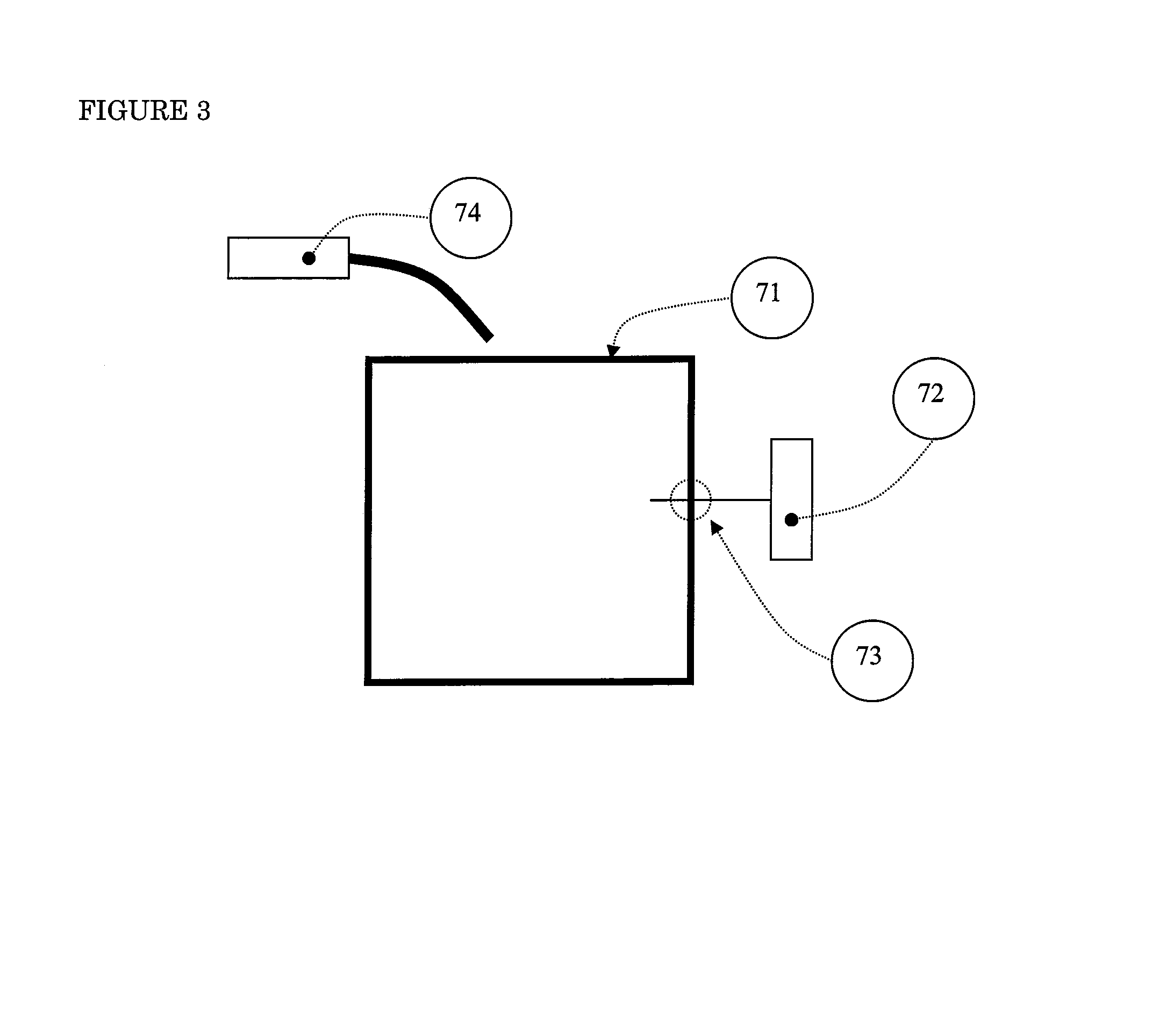Compositions and methods for detecting leaks in HVAC/R systems
- Summary
- Abstract
- Description
- Claims
- Application Information
AI Technical Summary
Benefits of technology
Problems solved by technology
Method used
Image
Examples
example 1
[0096]A composition of 15 wt. % 1-chloro-2,2,2-trifluoroethyl difluoromethyl in HFC-134a was mixed and sealed in a pressurized can. The total weight of mixture in the can was about 100 grams. The furnace used for the tests is depicted in FIG. 1. A small-hole access port along with a nozzle extension tube on the aerosol was used to introduce the vaporized detection fluid into the ductwork 14 just above the conditioned air supply 13. The composition was then sprayed into a sealed furnace with a series of holes ranging in diameters between 0.024″ and 0.081″ to simulate leaks. All holes but one size were exposed during each test. The probe of an Inficon TEK-Mate® refrigerant leak detector was introduced into the exhaust stream via the condensate drain line opening 18 in FIG. 1. The composition was sprayed for 5 sec, and a strong leak was detected within 5 sec of starting the spray for all of the hole sizes. Similar results were measured with 5 and 10 wt. % 1-chloro-2,2,2-trifluoroethyl ...
example 2
[0097]Combinations of HFC-134a, 1-chloro-2,2,2-trifluoroethyl difluoromethyl ether, and 4-bromo-3-chloro-3,4,4-trifluoro-1-butene were prepared in a spray can with 4-bromo-3-chloro-3,4,4-trifluoro-1-butene at 0.4 wt. % and 1-chloro-2,2,2-trifluoroethyl difluoromethyl ether at 4 wt. %, and the remainder consisting of HFC-134a. Using an Inficon D-TEK® halogen leak detector, compositions containing the leak detection enhancers produced a substantially stronger signal than HFC-134a alone when sprayed in open air in the vicinity of the leak detector. Compositions containing 1-chloro-2,2,2-trifluoroethyl difluoromethyl also produced more sensitive response than those compositions containing only 4-bromo-3-chloro-3,4,4-trifluoro-1-butene.
example 3
[0098]A copper tube was configured with small holes ranging in diameter from 0.024 inches to 0.063 inches. The tube was purged with nitrogen at one end and the leak detector was placed at the other open end. The formulations of example 2 were sprayed on the outside of the tube over each of the holes all but one hole size was covered for each test. The leak detector response generally increased as the hole size (i.e., simulated leak) increased, and the formulations containing 1-chloro-2,2,2-trifluoroethyl difluoromethyl ether and 4-bromo-3-chloro-3,4,4-trifluoro-1-butene produced a stronger leak detection signal than HFC-134a alone for all hole sizes. This test is representative of leak detection in any plumbing or piping system, including, but not limited to, a heat pump, air conditioner, automotive radiator, heat exchanger or refrigerator.
PUM
 Login to View More
Login to View More Abstract
Description
Claims
Application Information
 Login to View More
Login to View More - R&D
- Intellectual Property
- Life Sciences
- Materials
- Tech Scout
- Unparalleled Data Quality
- Higher Quality Content
- 60% Fewer Hallucinations
Browse by: Latest US Patents, China's latest patents, Technical Efficacy Thesaurus, Application Domain, Technology Topic, Popular Technical Reports.
© 2025 PatSnap. All rights reserved.Legal|Privacy policy|Modern Slavery Act Transparency Statement|Sitemap|About US| Contact US: help@patsnap.com



